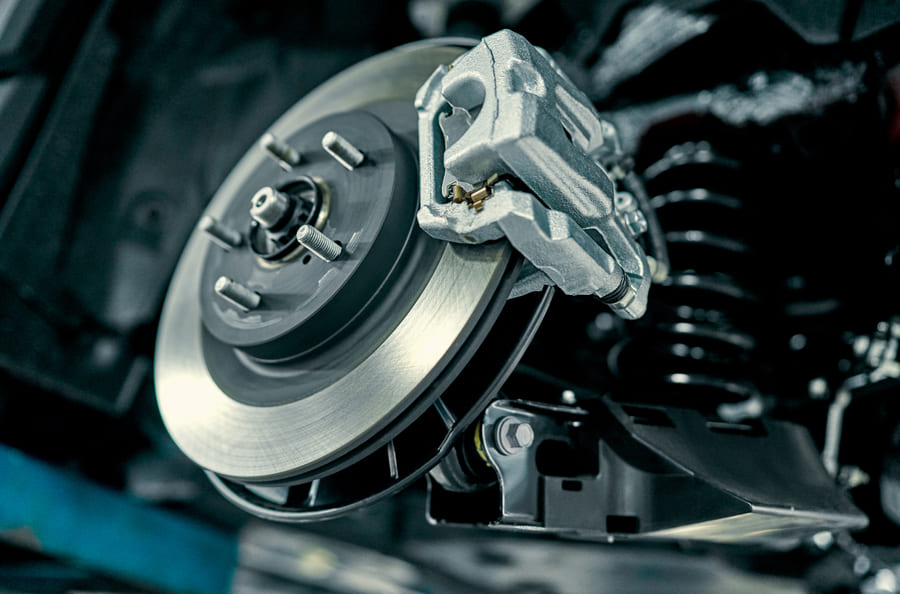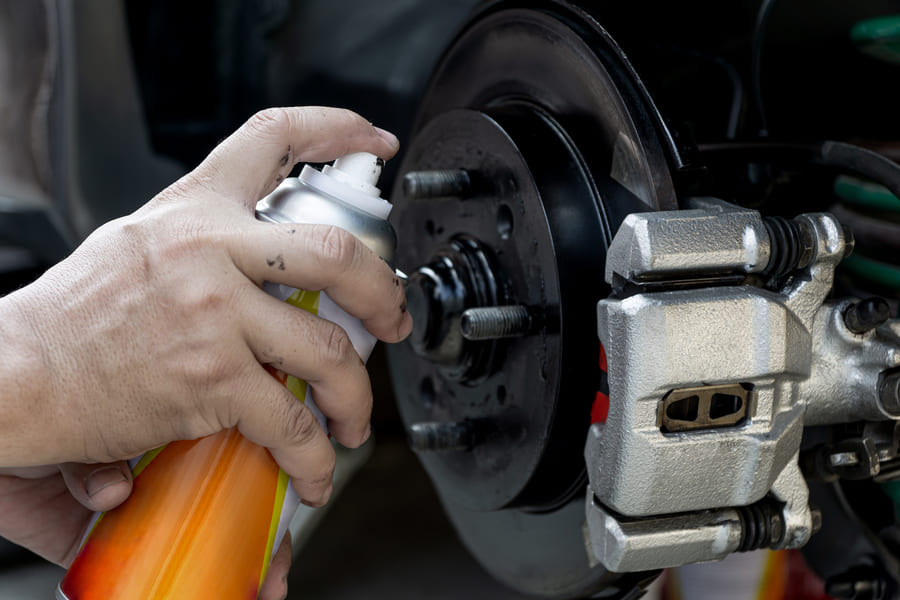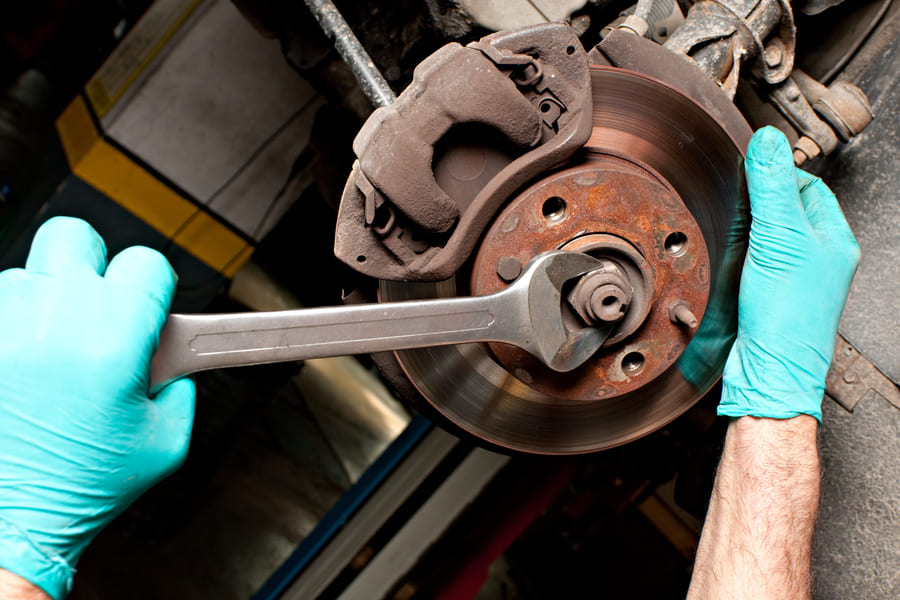Brake calipers are critical elements of the disk braking systems belonging to the car they are installed in. They provide the necessary force to stop the car in emergencies or otherwise. Them not working properly poses a significant risk that cannot be ignored. It’s important to recognise failing calipers well before they become completely unusable.
How are brake calipers supposed to work?
Brake calipers are part of the most common type of braking system, namely disc braking systems. A functional disc braking system operates under the following principles: The driver depresses the pedal, exerting force through a hydraulic system. This system of hoses and tubes transfers this force to the brakes attached to the wheels. The wheels have heavy discs made of metal called brake rotors, which turn alongside the wheels. Each of these rotors has two pads to its left and right sides attached to the brake calipers. Once the hydraulic force reaches these calipers, they press the pads onto the brake disk and slow or stop the wheels through friction. Something wrong with this system will wear down the components quickly. Not even the best brands of brake discs can endure this kind of punishment for long.
Symptoms of a faulty brake caliper
Brake calipers are not really considered wear items. Unlike the pads, they are built to last and aren’t intended for regular replacement. But while they aren’t exposed to extreme forces that wear them down, they can still break or develop issues. Here are some ways to find out if something has gone wrong:
- ! The car pulls to one side. This may have many causes, but calipers that have gone bad is one of them. If the car pulls to one side while braking or after releasing the brakes, this may be because the calipers are not functioning properly and have become stuck. If the car pulls to the left, for instance, this can be because the calipers on the left are not releasing or because the ones on the right are not grabbing. Calipers that won’t release will show this behaviour when the brakes are released and ones that don’t grab while the pedal is depressed.
- ! Fluid leaks. The brake system uses hydraulic fluid to function properly and is not designed to lose any. Leaks can significantly impair its functionality or shut it down completely. Leaking calipers will result in puddles of fluid near the wheels where they are installed. Should you notice these, have the problem taken care of immediately. A leaking brake system is so severe a hazard you shouldn’t drive your car to a service station. Have it towed instead.
- ! Strange noises. There are a number of different reasons for strange sounds coming from the area where the calipers are installed. For instance, worn brake pads will squeal and squeak as they near the end of their lifetime. If they are completely worn out, scraping and grinding sounds will be the result. Seized brake calipers may give off similar sounds as worn pads. Another worrying noise is the sound calipers or their brackets make when breaking. As with leaking hydraulic fluid, the car is in no condition to be driven safely if this happens and needs to be towed.
- ! Inspections and routine maintenance. The brakes contain parts that need to be regularly replaced and serviced. Routine inspections and replacement of associated parts may reveal problems with the brake calipers. This way, dirt accumulation, leaks, corrosion, and similar issues with the calipers can be detected before they result in an accident or render the vehicle in need of towing.
If you discover that the calipers are the issue, you may also need new pads.
How to free stuck brake calipers
A temporary fix for seized calipers depends on the cause of their malfunction. A broken caliper or one that lacks sufficient braking fluid needs to be fixed in a garage and other defects are also best handled there. But if you have a certain amount of expertise, for instance if you know how to paint brake calipers, and the necessary equipment, cleaning parts of the brakes that have become stuck on account of dirt is something you can accomplish on your own.
- i Park the car on a level surface and jack it up to access the wheels. Place the jack under the wheel you think is affected and place chocks behind the other wheels to ensure the car doesn’t roll away while you are working underneath it.
- i Remove the wheel. Using a lug wrench, unscrew the bolts and store them in a safe place where you won’t lose them. Remove the wheel and set it down nearby.
- i Clean the brake pads. Use appropriate automotive chemicals to achieve this.
- i Remove the caliper and pads. Once the pads are cleaned, you can remove them along with the caliper. The caliper will need to be unbolted.
- i Clean the caliper. If you don’t know how to lubricate a brake caliper piston, the first step is always to remove all old grease and lubricants with an appropriate cleaning agent and a rag. Inspect the rubber boots around the pins. If they’ve sustained any damage, this may be the cause of the malfunction. Regardless, if they are damaged, they need to be replaced.
- i Lubricate all parts. After cleaning the caliper, lubricate it and the pins with an appropriate lubricant.
- i Reinstall all parts. Put everything back into place and fasten it accordingly. Be careful not to overtighten, since this may damage the wheel, caliper, or brake pads.
For maximum safety, the calipers should be replaced. The cost to replace brake calipers isn’t particularly high and won’t break the bank. If the problem returns, this will become unavoidable. Seek out a trustworthy garage staffed with mechanics trained to service the make and brand of car you drive. Failing to act on parts of the brake system failing can lead to far more expensive repairs or accidents.
Den
a smiley technician with plenty of experience starring in AUTODOC's video tutorials;
Never seen without his goggles;
races his BMW X5 E53;
dreams about receiving a Gold Play Button for getting 1,000,000 subscribers on YouTube.










Comment